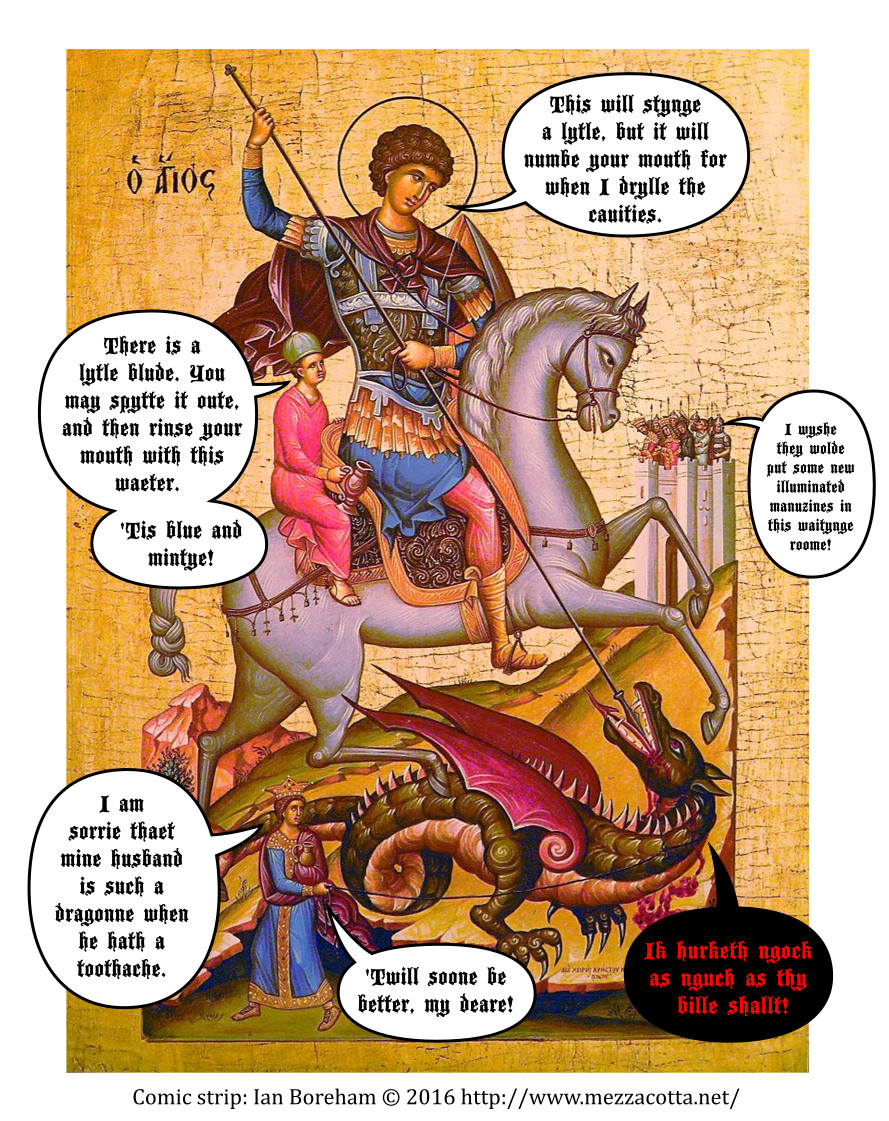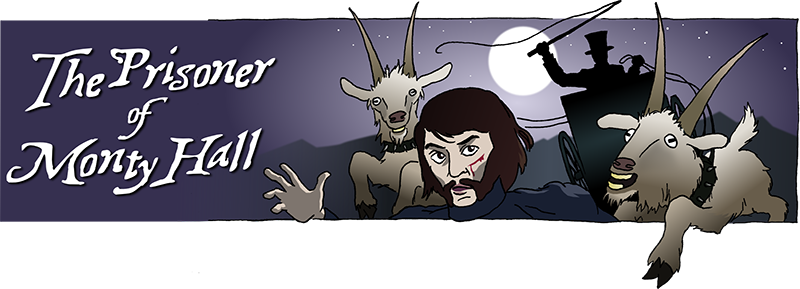» About » Archive » Search » Forum » RSS Feed Updates Wednesdays
No. 95: Who's being a martyr now?
First | Previous | 2016-11-16 | Next | Latest

First | Previous | 2016-11-16 | Next | Latest
Permanent URL: https://mezzacotta.net/pomh/?comic=95
Strip by: Ian Boreham
{An icon of St George slaying the dragon, reinterpreted as a scene of medieval dentistry. Dr St George is delicately injecting some anaesthetic into the back of Mr Dragon's mouth with a spear-shaped long needle. His dental assistant, Mr Homunculus, sits behind him on the horse, holding a jug. A princess has come to keep Mr Dragon company as he undergoes his procedure. A crowd of patients wait in the castle waiting room in the background.}
Dentist: This will stynge a lytle, but it will numbe your mouth for when I drylle the cauities.
Dental Assistant: There is a lytle blude. You may spytte it oute, and then rinse your mouth with this waeter.
Dental Assistant: 'Tis blue and mintye!
Wife: I am sorrie thaet mine husband is such a dragonne when he hath a
toothache.
Wife: 'Twill soone be better, my deare!
Patient: Ik hurketh ngock as nguch as thy bille shallt!
Waiting room occupant: I wyshe they wolde put some new illuminated manuzines in this waitynge roome!
The author writes:
Note that the circle of light behind St George's head is that adjustable light that dentists use (you know, the one that gives a visit to the dentist the whole alien-abduction vibe). The interesting features of St George iconography were brought to my attention by Mezzacotta LP. After trawling the web for usable images, I had quite a collection of images of St George seated on his horse facing the right, hands raised in this fashion, grasping a very slender spear, stabbing a diminutive dragon in the mouth, with a rather overpopulated-looking city in the background, a tiny princess hanging about, and a rather odd little man seated on the back of his horse holding a jug. (Just for my own amusement, I blended twelve of these images together, without any attempt at aligning the corresponding features, and it's still possible to see the horse, the rider, a group of parallel lines representing the spear, and so on. There were minor differences in the placement of the princess and the city, and St George's clothing differs a little. The appearance of the little man on the horse changes quite noticeably, but his diminutive size does not. It was hard to find information on who this little fellow is supposed to be. He didn't appear in the descriptions of the tale of St George and the Dragon that I came across. However, some more googling revealed that it is a controversial topic. I was surprised to learn that the story usually includes George taking the dragon prisoner and getting the princess to lead it back into her town, and then agreeing to slaughter it only if the town converted to Christianity. It also amuses me how the dragon is always a measly little thing that could probably be trampled by the horse's hooves, rather than a giant beast like we normally conceive of dragons today. It's also interesting to see how scale is treated in medieval art. St George is the focus, so he is shown large, but the jug-bearing midget and the princess (who is in the foreground, and should be pretty large) are both shown quite small. The people in the town (like people shown in castles and towers in other medieval art) are also shown scaled up considerably compared to the town itself, and the impression is one of an overpopulated miniature model town. It seems that size was used to convey importance and to allow things to be perceived, rather than to present an accurate image. Assembled in Krita using what I understand to be a 12th century icon of St George, from Bulgaria.
